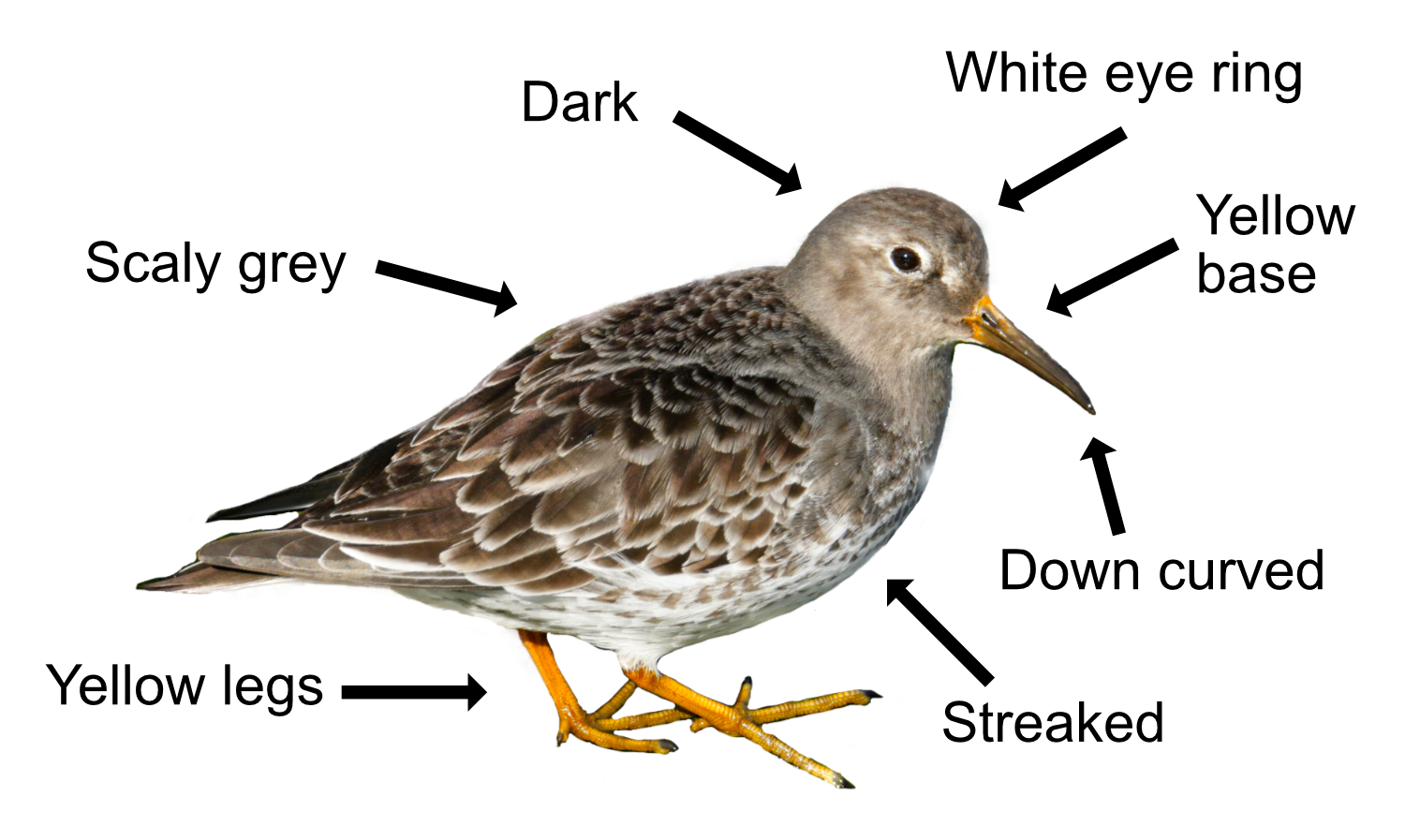
The purple bit of Purple Sandpiper is a little misleading, as you can only see the purple colour when very close up, on some of its back feathers. Plain Grey Sandpiper would have been much closer. They are a winter visitor, mainly seen along the north-eastern coasts, liking rocky shorelines by the sea often mixed in with their Turnstone mates. They are unusual for a wader in that you can get quite close to them before they run away.

The Purple Sandpiper is a medium-sized dumpy looking bird, larger, stockier and darker than a Dunlin, looking scaly grey with just a hint of purple. It has a dark head with white streaks, a white eye ring, a heavily streaked breast and sides, and a pale belly. Their bill is dark and down curved with a yellow base, and their short legs are also yellow. In flight, they look dark as they fly low over the sea. Their dark tail has white sides and there is a very faint wing bar. Although generally silent, they sometimes make a Swallow like twittering "wee-wit" call on take-off.
Purple Sandpipers feed on small fish and invertebrates, which they pick up from the water’s edge as they are washed ashore or found amongst newly exposed seaweed on flat rocks that project into the sea. They are masters at dodging the waves by jumping.
They are a 'hard as nails' sandpiper, nesting in the Arctic and Subarctic regions of Europe such as the Scandinavian uplands and Greenland. Nesting starts in June and the male makes several scrapes on open ground. The female chooses one and lays 4 eggs which hatch after 21 days. Dad does most of the incubation with mum often leaving before the eggs even hatch! Like most girls, she doesn’t like the cold. The young can feed themselves, which is just as well, while dad cares for them for the 4 weeks until they can fly. Purple Sandpipers moult completely between July and September, while near their breeding grounds, going to their dark winter colours before arriving here. Birds in the High Arctic migrate furthest while birds in Northern Europe rarely move far, many staying put after breeding.
About 13,000 Purple Sandpipers overwinter in Britain, arriving in September and staying until as late as May. Only three pairs have ever nested in Scotland, with the breeding areas kept strictly secret to protect the birds from egg thieves and disturbance. The oldest Purple Sandpiper lived for 13 years.
Their Latin name is 'calidris maritima' where 'calidris' is from the Ancient Greek 'kalidris' for a grey-coloured waterside bird, and 'maritima' is from Latin for 'of the sea' (from which we get the word 'maritime'). Purple Sandpipers are closely related to the Sanderling (’calidris alba’) and the Dunlin (’calidris alpina’).